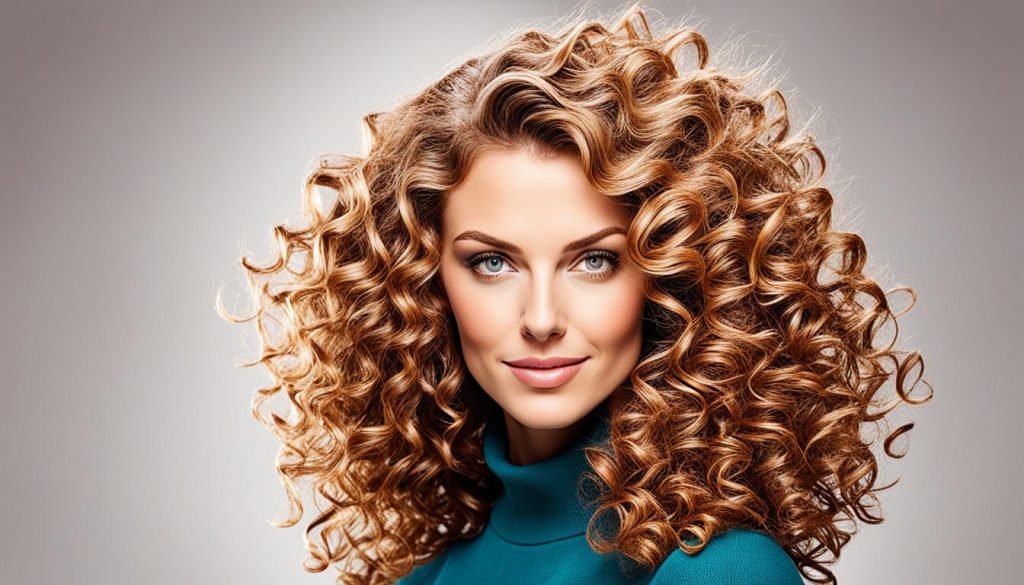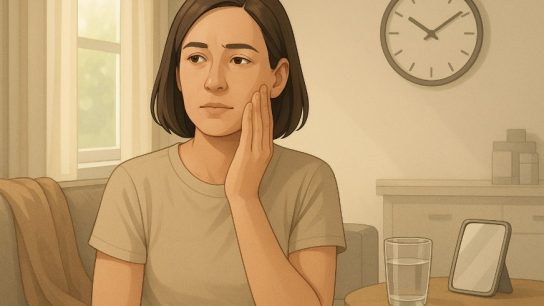When it comes to hair care routine, one of the most common questions is, “How many times should you wash your hair a week?” Finding the right washing frequency is crucial for maintaining healthy and beautiful hair. So, let’s dive into the best hair washing practices and discover the optimal hair cleansing frequency.
How often you should wash your hair depends on various factors such as age, ethnic background, hair length, hair type, and activity level. These factors play a significant role in determining how frequently you should cleanse your hair.
Factors like age and ethnic background can affect the oil production in your scalp, which in turn determines the frequency of hair washing. Hair length and type also play a role, as longer hair tends to get drier and certain hair types require less frequent washing. Additionally, your activity level and the amount of oil production you experience can influence how often you should wash your hair.
Understanding these factors and their impact on your hair washing routine is essential for maintaining healthy and beautiful locks. Stay tuned as we explore the factors that can impact your wash schedule and provide you with valuable hair hygiene tips.
How Many Times Should You Wash Your Hair a Week?
When it comes to determining how often you should wash your hair, several factors should be taken into consideration. By understanding these factors, you can develop a personalized hair care routine that keeps your hair healthy and vibrant.
Age is one factor that influences your hair washing frequency. Younger individuals typically have more active oil glands in their scalps due to higher hormone levels. This increased oil production may require more frequent hair washing to maintain a clean and fresh feel.
Ethnic background is another important consideration. African American hair, for example, is prone to dryness, and washing too often can lead to further drying and potential brittleness. It is generally recommended to minimize hair washing frequency for individuals with extremely dry hair.
Hair length also plays a role in determining how often you should wash your hair. Longer hair is naturally more susceptible to dryness, as the oils produced by the scalp have a harder time reaching the ends. This may necessitate less frequent washing to prevent hair from becoming overly dry.
The texture of your hair, such as having curly or coarse hair, can affect the frequency of hair washing. Curly hair tends to be drier, and excessive washing can strip away natural oils, leading to frizz and dryness. On the other hand, coarse hair might require less frequent washing due to its density and thickness.
Lastly, your activity level and the amount of oil your scalp produces should be considered. If you engage in rigorous physical activities or have oily scalp, you may need to shampoo more frequently to remove excess oil and sweat.

Hair Hygiene Tips:
- Choose a shampoo and conditioner suitable for your hair type to maintain optimal scalp health.
- Consider using dry shampoo in between washes to refresh your hair and absorb excess oil.
- Pay attention to your scalp’s condition and adjust your hair washing frequency accordingly.
- Use lukewarm water when washing your hair, as hot water can strip away natural oils.
- Avoid over-brushing or excessive heat styling, as these can contribute to hair damage and the need for more frequent washing.
By taking these factors into account and following appropriate hair hygiene tips, you can establish a washing routine that keeps your hair healthy, clean, and beautiful.
Signs You’re Washing Too Often
Washing your hair is an essential part of any hair care routine, but did you know that washing your hair too often can actually do more harm than good? Overwashing can lead to dry and brittle hair, hair breakage, and even a dry scalp. Let’s take a closer look at the signs that indicate you may be washing your hair too frequently:
Dry, Brittle Hair
One of the most common signs of overwashing is dry and brittle hair. Frequent washing can strip away the natural oils that keep your hair moisturized, leaving it dry, dull, and prone to breakage. If you notice that your hair feels straw-like or lacks its usual shine, it may be a sign that you’re washing too often.
Hair Breakage
Excessive washing can weaken the hair shaft, making it more susceptible to breakage. This is especially true for those with delicate or chemically treated hair. If you’re experiencing more hair breakage than usual, it may be time to reevaluate your washing frequency.
Dry Scalp
Overwashing can also lead to a dry scalp. Washing your hair too frequently can strip away the natural oils that keep your scalp moisturized, resulting in dryness, itchiness, and irritation. If you find yourself constantly scratching your scalp or noticing flakes, it’s a sign that you may need to cut back on your hair washing.
Dandruff
On the other hand, not washing your hair often enough can also lead to scalp issues. When dead skin cells and oil build up on the scalp, it can result in dandruff or seborrheic dermatitis. These conditions can cause itchiness, flakiness, and inflammation. If you’re experiencing dandruff despite regular hair washing, it may be a sign that you’re not washing enough.
It’s important to find the right balance when it comes to washing your hair. Overwashing can cause dryness, brittleness, hair breakage, and a dry scalp, while underwashing can lead to dandruff and other scalp issues. Consider adjusting your hair washing frequency based on these signs and remember to listen to your hair’s needs.
| Signs of Overwashing | Signs of Underwashing |
|---|---|
| Dry and brittle hair | Dandruff or seborrheic dermatitis |
| Hair breakage | Itchy or irritated scalp |
| Dry scalp | Excessive oiliness or greasy appearance |

Remember, finding the right balance in your hair washing routine is key to maintaining healthy and beautiful hair. Pay attention to the signs that your hair is giving you and adjust your washing frequency accordingly. By doing so, you can ensure that your hair remains moisturized, strong, and free from scalp issues.
Tips to Shampoo Less
Are you tired of washing your hair every day? Well, you’re in luck! There are several effective ways to reduce the frequency of hair washing without sacrificing cleanliness or style. Incorporating these tips into your hair care routine will not only save you time but also help maintain the health and vitality of your hair.
1. Embrace Dry Shampoo
Dry shampoo is a game-changer when it comes to extending the time between washes. This innovative product absorbs excess oil and refreshes your hair, leaving it looking and smelling fresh. Simply spray the dry shampoo onto your roots, wait a few minutes, and then brush or massage it through your hair. It’s a quick and convenient way to keep your hair looking great throughout the week.
2. Focus on Conditioning Treatments
Conditioning treatments are essential for keeping your hair moisturized and nourished, especially when you’re shampooing less frequently. Instead of applying conditioner all over your hair, focus on the ends to prevent them from drying out. Look for deep conditioning masks or leave-in conditioners that provide intense hydration and repair damaged strands. Regular treatments will help keep your hair soft, smooth, and manageable.
3. Evaluate Your Styling Products
Styling products such as gels, mousses, and hairsprays can leave residue and buildup on your hair, making it appear dirty and greasy. Take a closer look at the products you use and consider switching to lightweight, residue-free formulas. Opt for styling products that promote volume, texture, and hold without weighing down your hair. By using the right products, you can minimize the need for frequent washing.
4. Adjust Your Shampooing Technique
The way you shampoo your hair can also impact the frequency of washes. Focus on cleansing the roots and scalp thoroughly, as that’s where oil and product buildup tend to accumulate. Avoid over-shampooing the ends of your hair, as this can strip away its natural oils and lead to dryness. Gently massage your scalp with your fingertips while shampooing to stimulate blood circulation and promote a healthy scalp.
By incorporating these tips into your hair care routine, you can reduce the need for frequent shampooing while keeping your hair fresh, clean, and healthy. Remember, finding the right balance and adjusting your routine to suit your hair’s needs is key. Experiment with different techniques and products until you find what works best for you.

How Often You Should Shampoo Based on Hair Type
When it comes to shampooing your hair, the frequency largely depends on your hair type. Different hair types have different needs, and finding the right balance is key to maintaining healthy and beautiful hair. Here are some guidelines to help you determine how often you should shampoo based on your hair type:
Fine Hair:
If you have fine hair, you may find that it tends to become greasy more quickly. To keep your hair looking fresh and voluminous, it’s recommended to wash it every 1 to 2 days. Opt for a lightweight shampoo and conditioner that won’t weigh down your hair.
Medium Hair:
For those with medium-textured hair, shampooing every 2 to 4 days is generally sufficient. This hair type strikes a balance between oily and dry, so regular washing helps maintain cleanliness without stripping away essential oils.
Thick Hair:
If you have thick, coarse hair, you may not need to shampoo as often. Washing once every 1 to 2 weeks can be suitable, especially if you have tight curls that can be damaged with excessive washing and styling. However, it’s essential to monitor your hair’s condition and adjust as needed.
Curly Hair:
Curly hair typically requires more moisture and conditioning to keep the curls defined and frizz-free. It’s recommended to shampoo curly hair every 2 to 3 days, depending on your hair’s specific needs. Regular deep conditioning treatments and moisturizing products can help keep curls healthy and vibrant.
Remember, these are general guidelines, and you should always listen to your hair’s individual needs. Experiment with different washing frequencies and techniques to find the best routine for your specific hair type. By understanding your hair type and tailoring your hair care routine accordingly, you can achieve optimal results and maintain gorgeous, healthy hair.

Conclusion
Finding the optimal hair washing schedule is essential for maintaining healthy hair and scalp. It’s crucial to consider various factors such as age, ethnic background, hair length, hair type, and activity level when determining how often to wash your hair. Overwashing or underwashing can lead to issues like dryness, breakage, and dandruff, so finding the right balance is key.
To establish an effective hair care routine, follow these tips. First, consider shampooing less by using dry shampoo between washes and focusing conditioning treatments on the ends of your hair. Additionally, evaluate your styling products to prevent buildup that may require frequent washing. Adjust your shampooing technique to only shampoo the roots, preventing excessive drying of the ends. Take into account your hair type as well. Fine hair may need washing every 1 to 2 days, while medium textured hair can go 2 to 4 days between washes. Those with thick, coarse hair may only need to shampoo once every 1 to 2 weeks, and curly hair may require regular moisturizing and conditioning.
Remember, everyone’s hair is unique, so it’s essential to experiment and find the best routine for your hair. By considering the factors that impact your washing schedule, following hair hygiene tips, and adjusting your hair care routine accordingly, you can maintain optimal hair health and achieve the best results.





